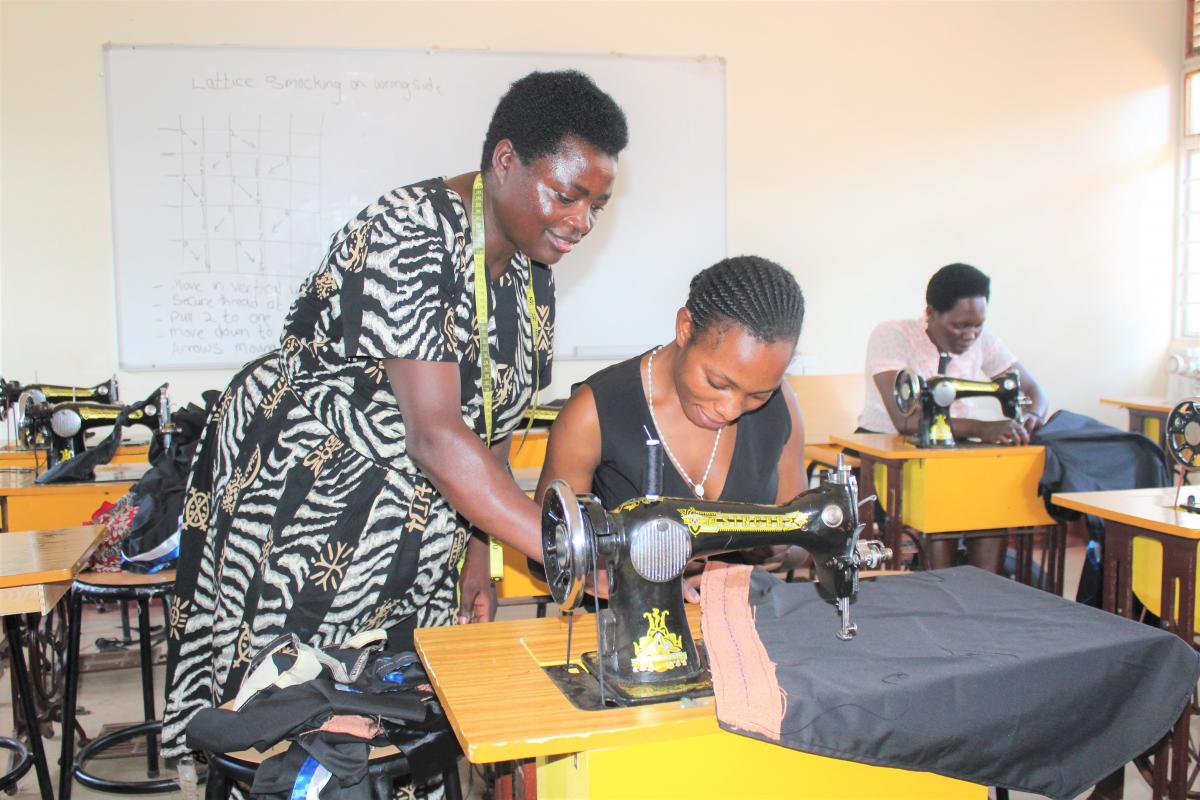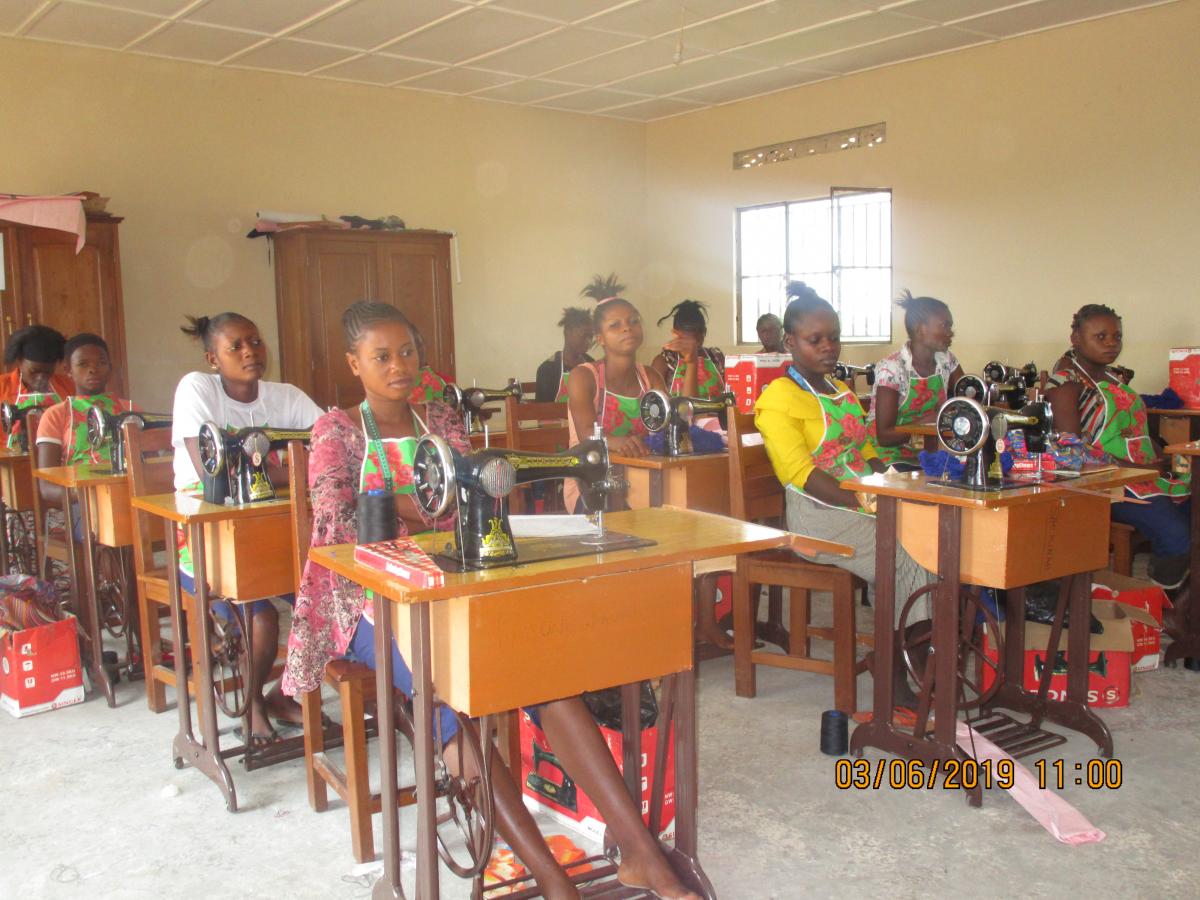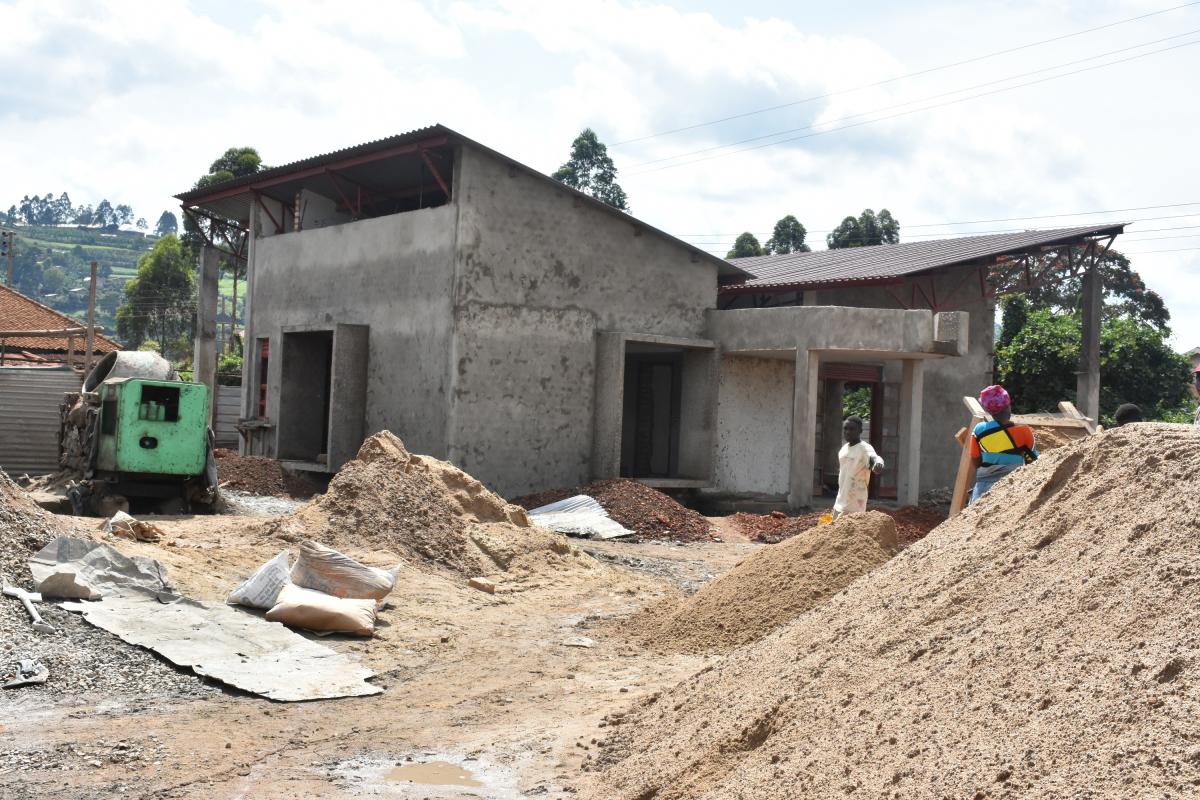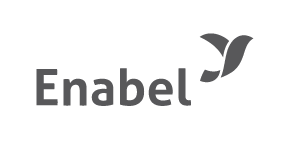Rechercher
Affichage de 2280 à 2295 sur 3055 actualités
-
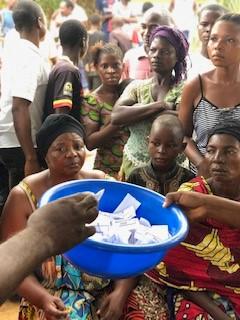
LES FEMMES A L’ASSAUT DES ASUREP
Grâce MALI FAIDA | 12/06/2019
Les femmes représentent encore trop souvent un groupe discriminé et défavorisé par rapport aux hommes.C’est dans ce cadre que l’orientation relative à la coopération au développement adopte comme principe de base l'intégration de la dimension du genre de façon transversale et directe dans toutes les interventions.Le nouveau contrat de gestion d’Enabel s’engage à respecter les lois et conventions en matière de genre, de diversité et d’égalité des chances.Dans ce contexte le ProgEau accentue ses actions sur l’intégration de la dimension genre afin d’assurer le renforcement de l’égalité entre les hommes et les femmes, et l’autonomisation des femmes. Le ProgEau privilégie une approche participative visant l’autonomie et l’autodétermination des populations et volontairement pour les femmes. Permettre aux femmes d’améliorer leur situation, c’est permettre l’amélioration de la situation des familles, de la communauté et de valoriser l’égalité et les valeurs que les femmes apportent.Au foyer, la gestion de l’eau, ce sont les femmes qui s’en occupent : elles vont aux bornes fontaines et utilisent l’eau dans la vie quotidienne.Dans les ProgEau, les femmes nécessairement se doivent d’être présentes dans les comités de gestion des ASUREP (Associations des Usagers des Réseaux d’Eau Potable). Et depuis le mois de mai 2019, le ProgEau supervise et accompagne le processus des élections des membres délégués des ASUREP des quartiers au Maniema et au Sud Kivu.Les femmes sont venues volontairement et activement participer au processus d’élection afin de s’impliquer dans le rôle décisionnel. A ce jour 30 % sont attendues mais c’est déjà au-delà, au Maniema que nous retrouvons les femmes dans le comité de gestion.Ce n’est que tous unis pour le même défi d’amélioration de la communauté que hommes et femmes actifs inscriront le changement dans la gestion ; Plus de redevabilité, plus de transparence.
-
Tailoring and Garmentry training for department staff improves skills transfer
Rachael AYEBALE | 12/06/2019
National Instructors College Abilonino is a one of the vocational training institutions in Uganda located in the northern part of Uganda.Among the many vocational trainings offered at the college is a course in tailoring and garment design.The tailoring and garment department however was faced with several challenges that hindered smooth transfer of learning to the students.The workshop lay out was poor, they had no knowledge on decorative designing and yet they had the equipment, identifying fabrics and material types was a challenge, resource mobilization from products of the class was no existent but rather a pile of product was kept in the class to gather dust.That was until the Support to the Development of Human resources project facilitated a needs assessment exercise at the facility aimed at identifying the key skills gaps that then the project would support to bridge.These gaps and many others in various departments stood out and thus a training was then tailored and administrated to the staff of the tailoring and garments department.The situation has since been turned around in this department.A walk into the tailoring room and you see a symmetrical layout of the workshop. Machines of the same kind are placed in one space to ensure smooth transition from one stage of production to the other.“Each group working on a particular phase of a product are in one space,” Teddy Kitibwa, a senior lecturer in the department mentions.“We have also sold all our products. We use to have piles and piles of products and we didn’t know what to do with them. Now almost everything is gone.” Teddy adds.“You can imagine, we had equipment for graphic designing but we didn’t know how to use them. Thanks to the training, we now have the knowledge and we are now even teaching our students graphic designing on fabrics,” teddy says“We also now can easily identify which fabric is what, what fabric is suitable for what. This has greatly helped us make standard products that can be bought.” She adds.The resources collected from sales are being used to purchase more equipment, and support students in the class who may need any financial support. This motivates the students knowing in case of any problem, there is an emergency fund that can support them to complete their course.“We are really greatful for this training. The trainer was very knowledgeable and has helped us a lot to structure our department better. If only she would come again.” Teddy concludes
-

Reportage adéquation formation-emploi - Enabel Burundi
Aimé GIRUKWIGOMBA | 10/06/2019
Projet ACFPT : "Une réponse à la formation et l'insertion professionnelle des jeunes au Burundi".
-

Clearing the Dust: How Libraries are Changing in National Teachers' Colleges
Dorothy KYAMAZIMA | 06/06/2019
What is the future of libraries in this digital age? As technology continues to evolve and spur innovation, libraries too are changing. They are adapting to accommodate new applications of technology for learning, research and information. Meet Susan Owomugisha, a librarian from National Teachers’ College Kabale, sharing how technology is transforming libraries and making them more relevant. This is part of Enabel’s efforts to improve access and use of information in the colleges through user-friendly libraries by improving the management of libraries using KOHA, ensuring availability of equipment in the libraries and other continuous professional development trainings for the Librarians and their support teams.
-
DE LA “RUE” VERS L’EMPLOI
Grâce MALI FAIDA | 04/06/2019
Dans le cadre du partenariat avec « Dynamo International » et « AMO/CATSR » grâce à l’appui d’Enabel/EDUKOR en infrastructures et équipements, Il y a trois mois démarrait le 1er module de « Coupe-Couture » destiné à un groupe de 15 jeunes filles issues de la « rue ». Après quelques semaines d’apprentissage elles nous présentent leurs premières confections : tablier, chemise d’uniforme pour enfant, boubou, robe pour fillette, culotte, le drap pour bébé, Nous encourageons ces jeunes filles dans leurs parcours d’intégration socio professionnelle visant l’emploi en fin de trajet d’ici quelques mois en créant leur propre « AGR » (activités génératrices de revenus) équipées de leurs « Kit d’Insertion » aux bénéfices des communautés. MICHEL PUJANA RESPONSABLE EDUKOR
-
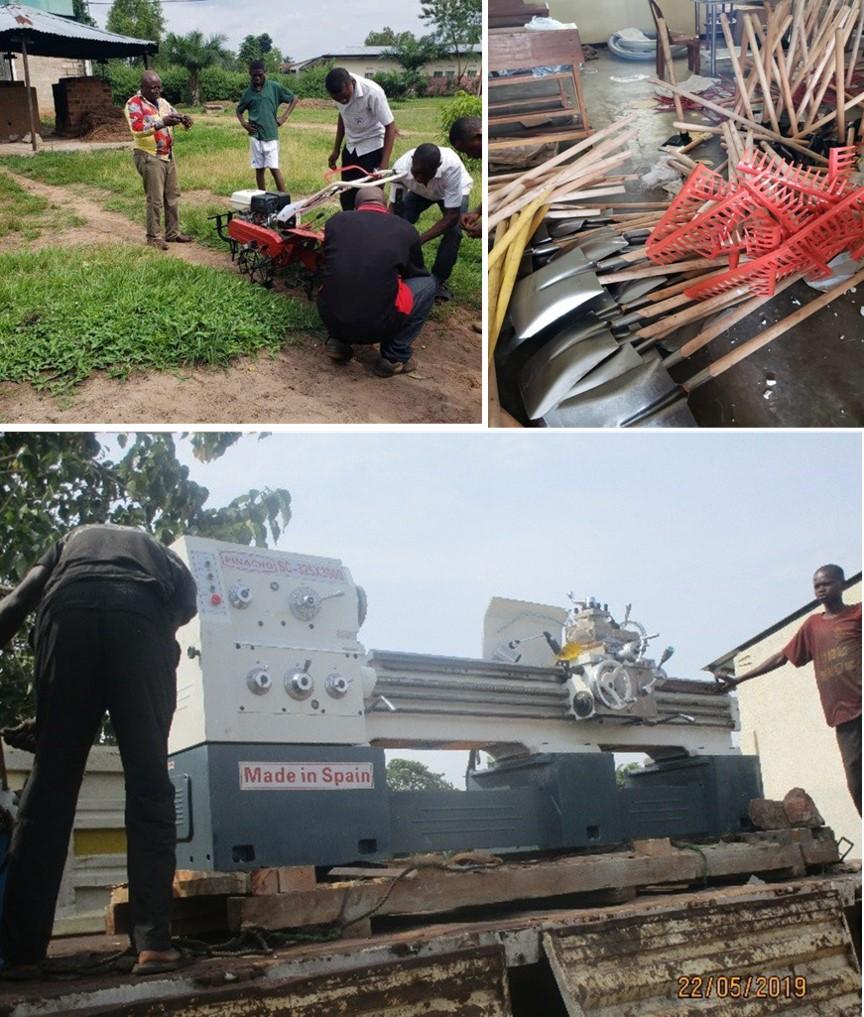
ENABEL EQUIPE 5 CENTRES D’APPLICATION AU KASAÏ ORIENTAL ET LA LOMAMI
Grâce MALI FAIDA | 04/06/2019
Dans le cadre de l’amélioration de la qualité de l’ETFP en RDC, Enabel au travers de son programme EDUKOR au Kasaï Oriental et la Lomami appuie 5 Centres d’Application dans les filières de l’agriculture générale/vétérinaire/transformation alimentaire, la mécanique générale, la menuiserie, la mécanique moto et l’imprimerie.Après avoir bénéficié de renforcement des capacités pour leurs enseignants, de constructions et réhabilitations de leurs infrastructures, de la mise en œuvre des approches innovantes telles que les « AGR » (activités génératrices de revenus), de la « Formation en Alternance » pour plus de 230 jeunes apprenants par an au sein d’entreprises locales et de l’accompagnement des sortants dans le cadre de projets d’insertion professionnelle visant des emplois durables et dignes une nouvelle phase s’ouvre aux jeunes avec la réception et l’installation des équipements et outillages pour les ateliers d’apprentissage technique métiers dans les 5 CDA.Ces nouveaux équipements de dernière génération permettront aux apprenants de parfaire l’acquisition des compétences nécessaires pour répondre aux besoins du marché de l’emploi et envisager également de se lancer dans l’auto emploi au travers de l’entrepreneuriat.Grâce à ces différents appuis apportés par Enabel une main d’œuvre qualifiée sera mise au service des communautés et provinces en vue accroître le développement socio économique des régions les plus fragilisées créant de l’emploi pour les jeunes sortants de l’ETFP.MICHEL PUJANARESPONSABLE EDUKOR
-
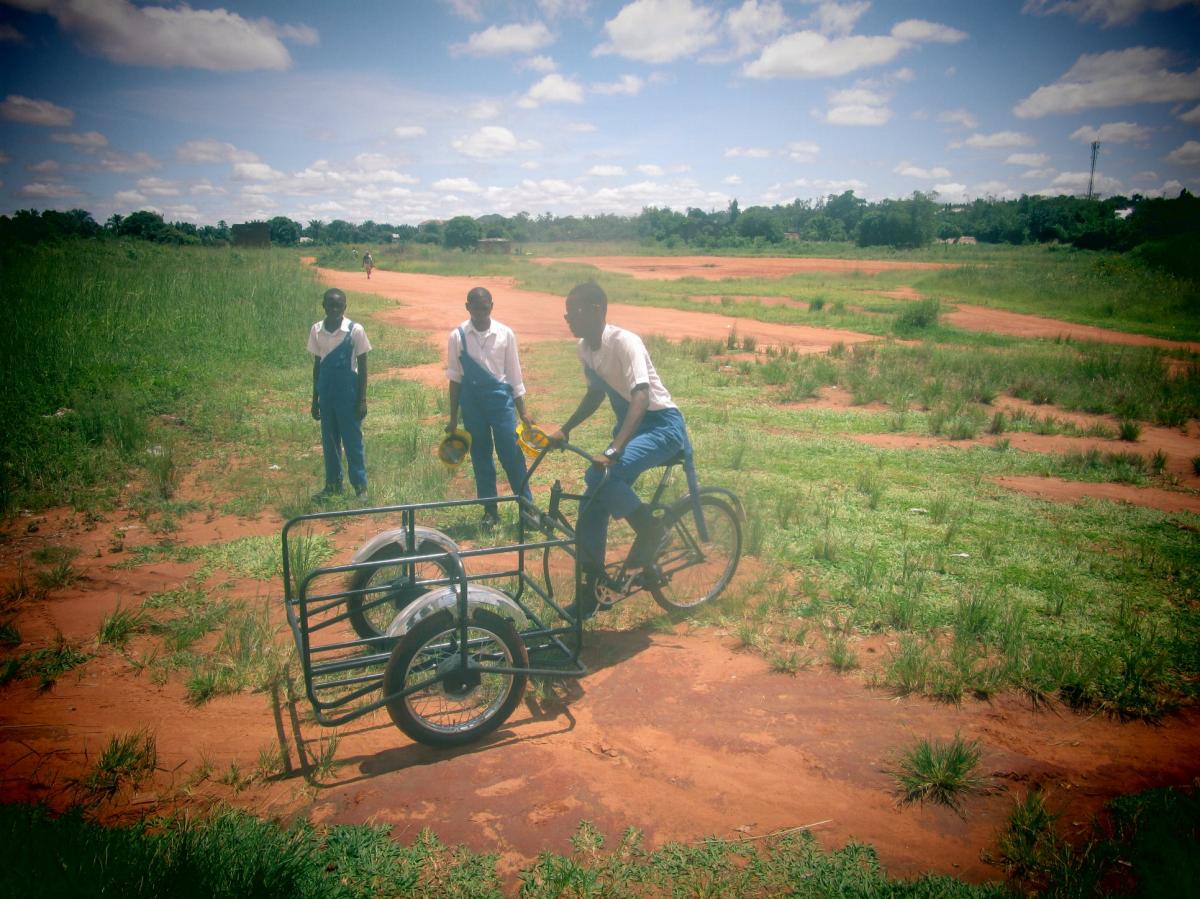
LA FILIÈRE MÉCANIQUE GÉNÉRALE INAUGURE SON NOUVEAU TRICYCLE PORTEUR
Grâce MALI FAIDA | 21/05/2019
EDUKOR lançait en début Mars, un défi innovant aux jeunes apprenants de la filière « mécanique générale » du Centre d’Application Technique de Mbuji Maii. Les jeunes ont construit ce tricycle porteur de « A à Z » sur base d’un simple schéma, devant faire appel à leurs compétences acquises au CDA, la réflexion, le travail en équipe, l’imagination affrontant les obstacles/difficultés, mais en trouvant toujours ensemble les solutions adaptées. Ce « Prototype » sera testé par plusieurs transporteurs/vélo (de braises et autres marchandises) afin de valider son caractère fonctionnel. L’étape suivante consistera à proposer aux associations de transporteurs de vélos du Kasaï Oriental, la possibilité d’acquérir ce tricycle . Ce qui leur permettra de réduire la pénibilité de leur métier en facilitant la conduite et en autorisant une capacité de charge additionnelle. Les jeunes du CDA réfléchissent déjà à d’autres projets innovants qui bénéficieront à leur communauté.
-
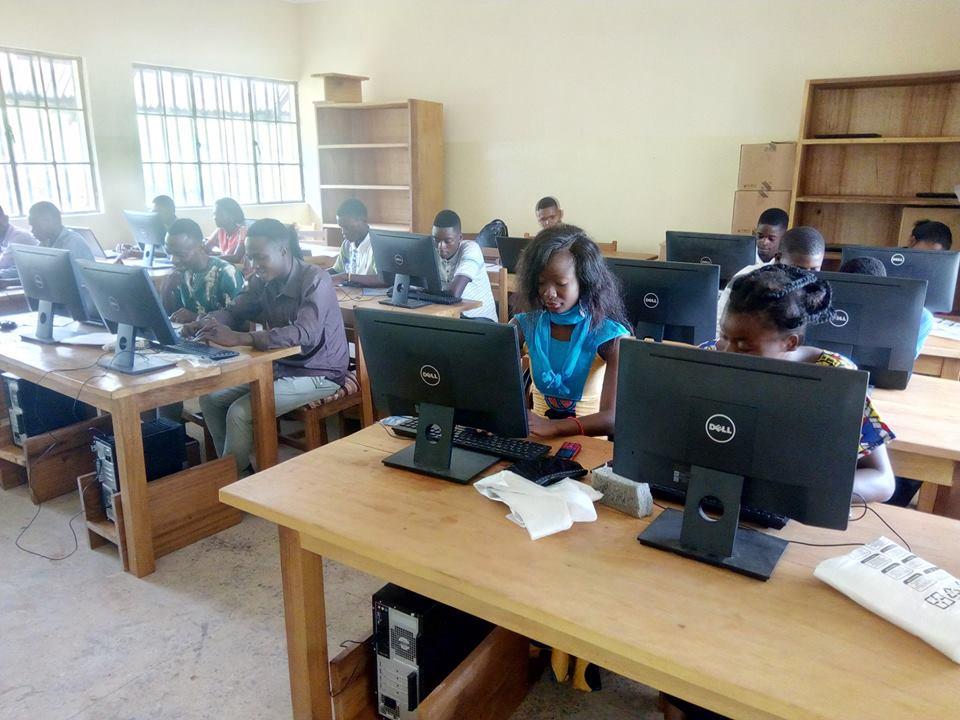
DÉBUT DE LA FORMATION EN IMPRIMERIE A MBUJI-MAYI
Grâce MALI FAIDA | 21/05/2019
Un groupe de 25 filles et garçons en rupture scolaire, a démarré en janvier une formation d'un an en imprimerie au centre DON-BOSCO à Mbuji-Mayi.Doté d'équipements dernier cri, ce dispositif modulaire devrait permettre à ces jeunes de réussir leur insertion professionnelle via l'auto emploi. Les premières commandes de cartes de visites et d'affiches viennent de tomber.
-
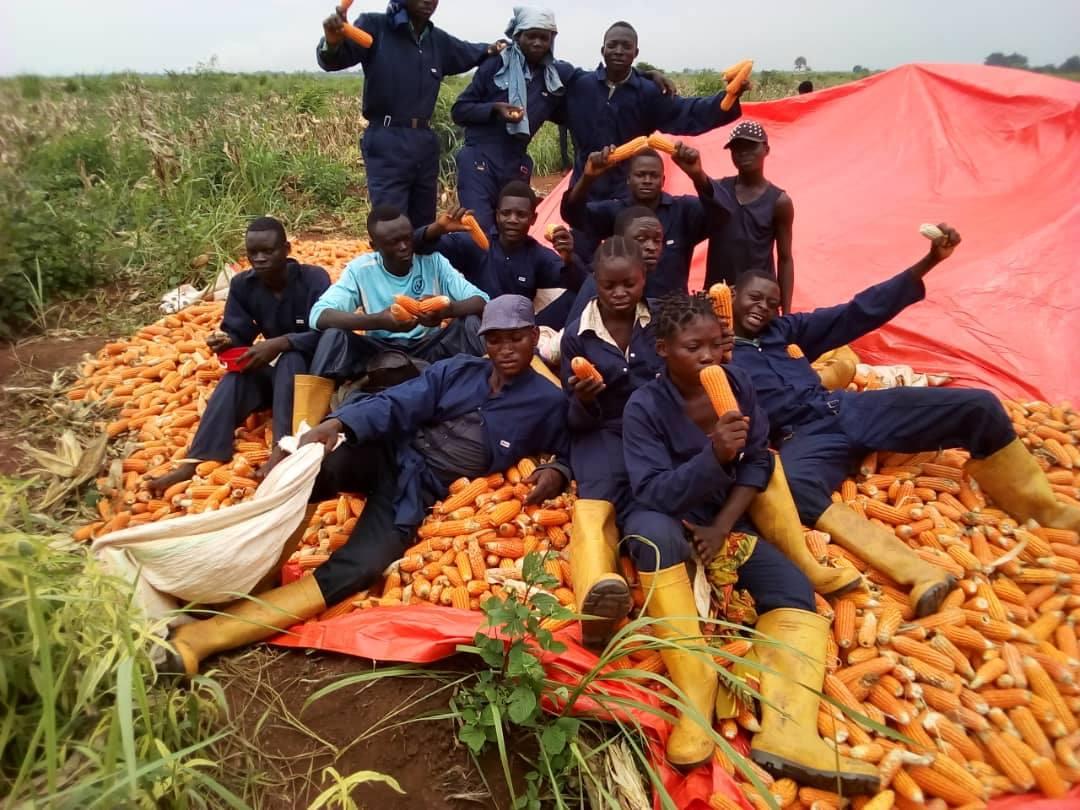
LES JEUNES DE LA FILIÈRE AGRICULTURE DÉBUTENT LEUR ACTIVITÉ
Grâce MALI FAIDA | 21/05/2019
NGANDAJIKA: 36 jeunes lauréats issus de la filière technique agriculture, soutenus dans leur insertion par EDUKOR - Enabel, se sont constitués en association sous activités génératrices de revenus. Ils viennent de finaliser, en ce 20 Mars 2019, une première récolte de 8 Tonnes de maïs et ont commencé la commercialisation de ce produit.
-
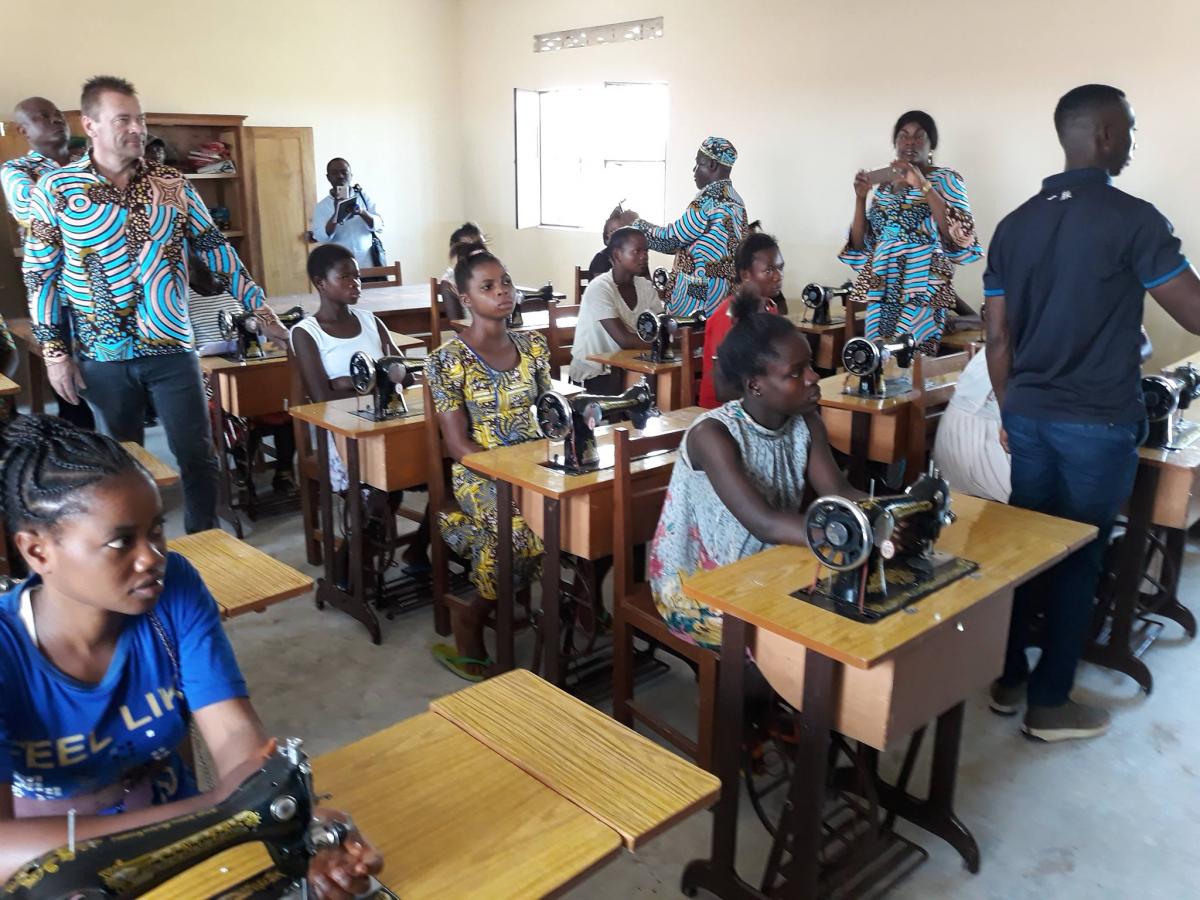
INAUGURATION DU CENTRE DE FORMATION DES JEUNES FILLES EN SITUATION DE RUE
Grâce MALI FAIDA | 21/05/2019
Le 12 Mars 2019, durant le mois de la Femme, a eu lieu l’inauguration et la remise officielle en présence des autorités locales et des partenaires du « Centre de formation des jeunes filles en situation de rue » dans la commune de Bipemba au Kasaï Oriental, résultat du partenariat impulsé par Enabel, via son intervention EDUKOR avec Dynamo International (ONG belge) et CATSR (ONG congolaise).L’objectif est de permettre au CATSR (Comité d’Appui au Travail Social de Rue) d’offrir à ses bénéficiaires, garçons et filles de la rue, la possibilité de se former au travers de parcours d’intégration dans différents métiers.EDUKOR a doté le partenaire d’un bâtiment, de sanitaires, d’un système en énergie solaire, de mobilier de bureau, d’équipements et consommables pour initier, avec un premier groupe de 15 jeunes filles le premier module de formation en « Coupe et Couture » visant l’insertion socio professionnelle post formation.
-

The Impact of Active Teaching and Learning in National Teachers' College Kabale
Dorothy KYAMAZIMA | 16/05/2019
Active Teaching and Learning is a learner-centred approach to teaching that was introduced in National Teachers' Colleges to strengthen the skills of teaching staff. National Teachers' College Kabale shares the impact this approach has made to teaching and learning within the college.
-
Creating a Child Friendly Environment in the National Teachers' Colleges
Dorothy KYAMAZIMA | 15/05/2019
National Teachers’ Colleges mainly host adult teachers and students seeking a profession in education as school teachers. So why the focus on creating Early Childhood Development (ECD) Centres within these colleges? Simply put, ECDs are exactly the kind of support parents within the college need in order to work more efficiently and continue their pursuit for further education. Throughout the course of the Teacher Training Education project, a number of concerns affecting the quality of teaching and learning in NTCs have come to light. One of these is the need for a safe learning environment that is conscious of gender needs, especially for women who desire to pursue an education or work while managing their maternal duties. The introduction of the ECD centres within the colleges is something that was initiated following experiences and strain most parents (teaching staff and students) had to endure when balancing their responsibilities. According to the National Infrastructure Expert, Frank Waibale, there are many mothers in the colleges including workers, students and teachers who have no way of taking care of their children while they attend their lessons or carry out their duties. “Having realized this, a small survey was conducted in the colleges and it established that there is a high number of children that needed special care under the age of 3 years. This on average was about 25-40 children per college,” he added. Additionally, the existing college infrastructure did not provide for facilities for breastfeeding mothers to nurse their babies and some mothers did not feel comfortable studying with their children and were therefore absent from class altogether. Based on these findings, the steering committee agreed to allocate 50,000 euros from the project budget to each of the 5 National Teachers’ Colleges to support the construction of Early Childhood Development Centres. The ECDs will address both children and parents' needs. They will provide a safe space for children in the NTCs while ensuring that parents continue their pursuit of education and work in a safe and enabling environment. Currently, the ECDs under construction will provide kitchen space for preparing meals, breastfeeding rooms, sleeping rooms, play areas, washing rooms, outdoor spaces, storage spaces, sanitary rooms and proper waste disposal units. The infrastructural designs for construction leave room for expansion of the ECDs in the near future to cater for an increased number of children in the NTCs. The construction of ECD centres is part of a bigger support project; Teacher Training Education which is implemented by the Ministry of Education and Sports and Enabel, the Belgian development agency.
-
Visit of Ambassador to Ha Tinh
Anh NGUYENNGOC | 13/05/2019
Meeting with PPC leaders and inauguration ceremony of the city's western drainage canalhttps://baohatinh.vn/chinh-tri/hop-tac-giua-ha-tinh-voi-vuong-quoc-bi-dat-nhieu-ket-qua-quan-trong/1...
-
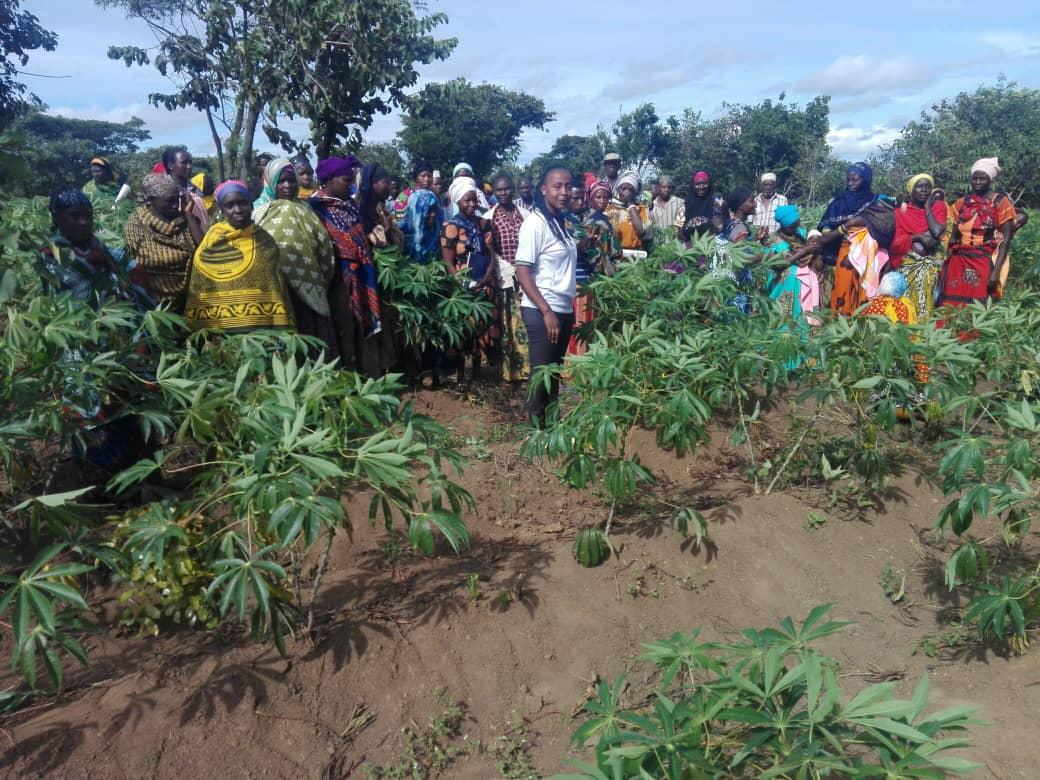
Farmer Field Day
Deogratius KIMENA | 12/05/2019
A picture showing extension officer elaborating to villagers and farmers good practices for cassava production during Farmer Day at Kazuramimba Uvinza.
-

La Plateforme Nationale des Utilisateurs des Services de Santé (PNUSS) est née
Reece-hermine ADANWENON | 10/05/2019
La salle de conférence de l’hôtel « Le Miracle » de Bohicon a abrité le Jeudi 09 Mai 2019, l’Assemblée Générale Constitutive qui a porté sur les fonts baptismaux, la Plateforme Nationale des Utilisateurs des Services de Santé (PNUSS) au Bénin. A travers cette naissance tant attendue, le Bénin s’est doté d’un nouvel instrument pour améliorer sensiblement la qualité des soins dans les formations sanitaires. Au terme de cette Assemblée Générale Constitutive qui a connu la participation d’une centaine de délégués des Plateformes des Utilisateurs des Services de Santé (PUSS) venus des départements de l’Atacora, Donga, du Mono et du Couffo, les textes statutaires et le règlement intérieur de la PNUSS ont été validés et un bureau exécutif composé de 10 membres a été élu pour conduire les destinées de la PNUSS. Le système de santé du Bénin s’est doté d’un nouvel instrument pour améliorer la qualité des soins dans les formations sanitaires. Il s’agit de la PNUSS, entendez Plateforme Nationale des Utilisateurs des Services de Santé. Grâce à l’appui technique et financier d’Enabel via le PASS-Sourou, la PNUSS a vu le jour suite à un processus amorcé depuis quelques mois avec notamment : l’implication des associations de jeunes activistes du droit à la santé organisée par l’ABMS à travers les clubs ‘’Amour & Vie’’ ; les rencontres bimestrielles pour échanger sur les outils et le processus de gestion des plaintes ; l’élaboration des projets de textes de base de la Plateforme Nationale des Utilisateurs des Services de Santé (PNUSS). S’intégrant dans les traités internationaux signés par le Bénin, la PNUSS veut montrer l’exemple en faisant la promotion du genre et en favorisant la parité hommes/femmes dans ses instances de décision. Les textes ont notamment été rédigés sur cette base; la mise en place d’un comité d’organisation de l’AGC ; la mobilisation sociale dans les zones pour le renforcement des adhésions et l’élection des délégués à l’AGC ; Ainsi, l’Assemblée générale a constitué d’une part l’aboutissement de ce long processus débuté en 2014 et d’autre part le début d’une nouvelle aventure pour relever des défis au plan national. Selon André FANOUKPE, Président du Comité d’Organisation de l’AGC, la PNUSS coordonnera les sections locales et centralisera l’information liée à la gestion des plaintes en vue d’assurer le plaidoyer et le dialogue au niveau central pour des soins de qualité. A l’en croire, cette plateforme qui est en train de naître aujourd’hui est une faitière des plateformes des utilisateurs des services de santé qui étaient déjà mis en place depuis près de 6 ans dans les zones sanitaires des départements du Mono et du Couffo à savoir Aplahoué, Dogbo, Djakotomey, Klouékanmè, Toviklin, Lalo, Comè, Bopa, Grand-Popo, Houéyogbé, et les zones sanitaires du département de la Donga à savoir Bassila, Djougou, Ouaké, Copargo. « Ses actions visent l’intégration des besoins réels des communautés dans les stratégies et politiques de santé en particulier mais a l’ambition de contribuer à l’amélioration des services sociaux de base en général. Aussi, la PNUSS devra-t-elle rendre compte de ses résultats à la base à travers ses sections locales », ajoutera Graziella GHESQUIERE, Conseillère Technique Internationale à Enabel et Responsable du bureau Droit à la Santé. Eric TINDO, représentant le Président du l’Association Nationale des Communes du Bénin (ANCB) a pour sa part, présenté les sincères félicitations du Président au Comité d’organisation et à Enabel pour l’effectivité de cette Assemblée Générale constitutive des Plateformes des Utilisateurs des Services de Santé. Ce processus qui a démarré dans certains des départements depuis 2013 connait ce jour, la mise à échelle nationale, a-t-il affirmé. Tout en saluant l’impartialité et l’approche genre qui a été observée dans le choix des congressistes, il a réaffirmé l’engagement de l’ANCB à accompagner la PNUSS, et qui a déjà délégué le responsable des plaidoyers pour être membre à titre consultatif dans le bureau qui a été mis en place. « Les maires du Bénin sont prêts à accueillir et à accompagner la plateforme pour que les besoins des utilisations des services de santé soient réellement pris en compte dans les différents documents stratégiques du secteur de la santé » a-t-il martelé. Les membres du Bureau élu - Janvier HOUNGUEVOU, Président de la PNUSS - Célestine AMETEDE, Secrétaire Générale - Saib WEDE, Trésorier Général - Sahadatou ATTA, Déléguée à la Promotion de la Santé Maternelle et Infantile - Sylvère BIAOU, Délégué à la Médiation Sociale et Genre - Inès YAHOUEDOH, Déléguée à la Promotion de la Santé Sexuelle et Reproductive des Adolescents et Jeunes - Stéphane SEHO, Responsable Chargé de l’Organisation et de la Communication - Sahabi BOUKARI, 1er Commissaire au compte - Virginie DJANGNI, 2ème Commissaire au compte - Privas OTI, 3ème Commissaire au compte
